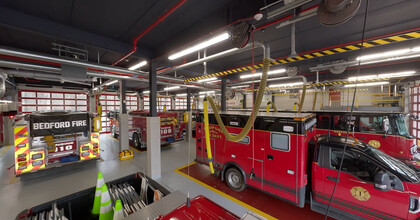What is in vehicle emissions?
Cars, trucks, busses, generators, and motorcycles; are all vehicles that release pollutants and gases into the air from internal combustion engines. Vehicle emissions can include a variety of harmful substances, such as carbon monoxide, nitrogen oxides, particulate matter and volatile organic compounds, which can contribute to air pollution and have negative impacts on public health and the environment.
As the emphasis on cleaner engines continues, clear improvements are visible. The reduction of particulate matter and of NOx are a few examples of this, however the dangerous effects of exhaust gases remain as several hazardous elements are still present:
Chemical
Benzene
Benzene ”alpha” pyrene
Polynuclear aromatic hydrocarbon
Formaldehyde
Benzofuran
Carbon monoxide
Nitric oxides
Health effect*
Group 1, human carcinogen
Group 1, human carcinogen
Group 2A, suspected human carcinogen
Group 2A, suspected human carcinogen
Group 2B, possibly human carcinogen
Life-threatening to humans
Life-threatening to humans
Vehicle emissions are harmful
Vehicle emissions have a range of negative health effects. Some of the key health impacts include:
- Respiratory problems: Exposure to air pollutants from vehicle emissions can cause respiratory issues such as bronchitis, asthma, and lung cancer.
- Cardiovascular disease: Fine particulate matter from vehicle emissions has been linked to heart attacks, strokes, and other cardiovascular problems.
- Neurological effects: Some chemicals in vehicle emissions, such as lead, have been linked to neurological problems, including developmental delays and decreased cognitive function.
- Cancer: Long-term exposure to some pollutants in vehicle emissions, such as benzene, has been linked to an increased risk of certain types of cancer.
- Other health problems: Vehicle emissions can also cause headaches, dizziness, nausea, and eye, nose, and throat irritation.
It's worth noting that people who are most vulnerable to the health effects of vehicle emissions, such as children, the elderly, and individuals with pre-existing health conditions, may experience these impacts more severely.
Safety management guidelines
At Plymovent, we continuously review safety management guidelines and listen to what the independent experts have to say:
- OSHA – The Occupational Safety and Health Administration has set a permissible exposure limit of 1 part of benzene per million parts of air (1 ppm) in the workplace during an 8-hour workday, 40-hour workweek.
- The EPA has classified benzene as a Group A carcinogen.
- The CDCs – Centers for Disease Control & Prevention report that exhaust from any incorrectly maintained vehicle can pose serious hazards. The most common source of carbon monoxide is automobile exhaust vented in confined spaces. Correct ventilation and prevention of carbon monoxide build-up in confined spaces must be assured.
- NIOSH – The National Institute for Occupational Safety and Health, states that there can be no safe level of exposure to a carcinogen; the NIOSH Threshold Limit Value is therefore the “lowest feasible level.”
Plymovent systems are designed to meet or exceed the standards of the most exacting health and safety codes –worldwide!
Vehicle exhaust extraction system
The most effective method of capturing vehicle exhaust fumes is at the source. Capturing the vehicle exhaust gases at the source provides a safer and more pleasant working environment. It minimizes air removal and movement, and thereby reduces required investment in air handling equipment and it lowers energy consumption. Installing an extraction solution from Plymovent creates a better atmosphere for staff as well as for visitors.
A key component to our system is the nozzle. The type of vehicle, the shape of the exhaust pipe and the way of working with exhaust removal systems, decides which nozzle is suitable for your application.
Options we can offer include:
- Use of a spring clip or vice-grip to keep the nozzle attached to the exhaust pipe.
- An outlet where CO-measuring equipment can be used.
- A damper to close off the systems that are not in use.
- Full metal nozzles for high temperature applications.
- Stand-alone nozzles to capture but not interfere with the exhaust flow. This is used in exhaust flow measurements.
We have a wide range of nozzles that can fit to all commonly used exhaust pipes, please contact us for a complete overview and advise on which nozzle is most suitable for your workshop.
We provide vehicle exhaust extraction systems which ensure clean air in the work environment of vehicle mechanics and firefighters and affiliated personnel.
How we work for tailor-made solutions
The tailor-made design of your system takes into account factors such as engine size, exhaust gas temperatures, system range and method of connection to the vehicle. By following our 7 step methodology we ensure installing a fully functional and cost effective solution to meet your specific needs for many years to come.
We investigate
Each customer has specific requirements. To be able to meet these, it is vital to conduct a thorough investigation, determine items as about the size of the facility, lay out and number of workstations, preferred control options etc. Finalizing the first phase gives an answer to what we need to do to deliver a product you desire.
We plan
Based on the information we receive from our investigation phase we create a proposal for the best solution dealing with your specific requirements. We choose products from our broad product range, to possible tailor made systems, which provide a durable and optimal solution for ensuring ease of operation and clean air at work.
We design
In the design phase we fine-tune the products and solutions chosen in the planning phase by detailing items as pressure drops, filters, controls, fan size etc. The flexibility and modularity of our products enable us to optimize your system in regard to modularity, safety, economy and operation. The result will be a system design which fits your requirements for today and the future.
We install
When the design phase is finished we have the ability to install your products and systems. Plymovent has over 30,000 system installations worldwide, ensuring a healthy working environment in each location. We have a vast experience of delivering turn-key solutions, enabling you to focus on your core business.
We commission
When the installation phase is finished we ensuring the system works in line with our expectations. Our constant strive for perfection and customer satisfaction leads to providing you with an air cleaning system that is a trustworthy investment, operating for many years to come.
We train
As a knowledge based partner, we are happy to share our professional knowledge. We have the ability to give you hands-on training to get the most out of our systems if requested.
We service and maintain
Continuous operational safety is important in every company. In order to ensure this we can offer you a various types of support and service possibilities. From installation support to service and maintenance agreements, our engineers ensure your products and systems remain in optimal condition!
More information
Would you like to know more about vehicle exhaust extraction systems? Then don’t hesitate to contact us!
Just call +31 (0)72 7504 600 or fill out the contact form and we will get back to you as soon as possible.








